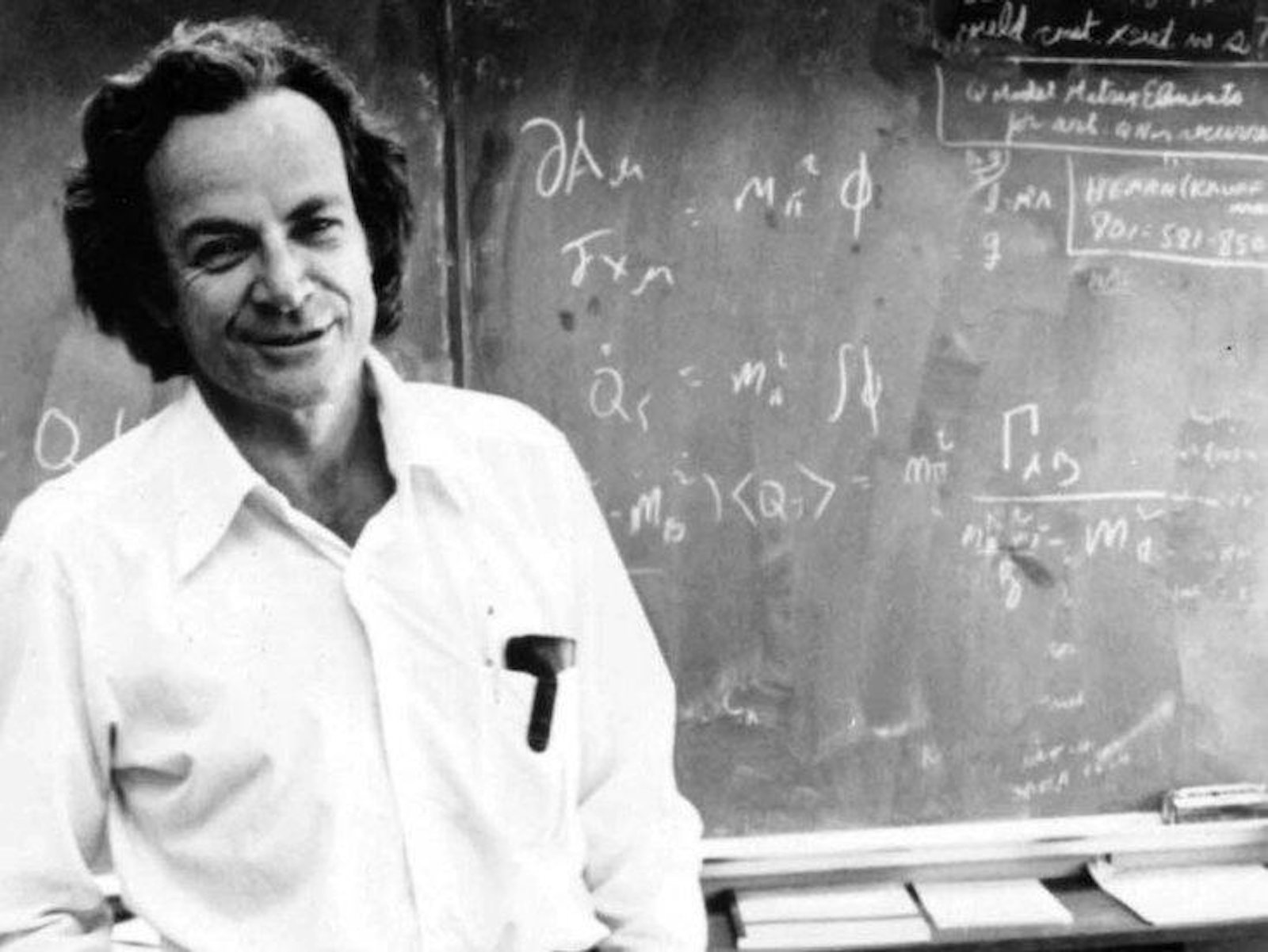The amazing image of a black hole unveiled Wednesday, along with data from the Event Horizon Telescope, may not substantiate Stephen Hawking’s famous theory that radiation, an example of spontaneous emission at the quantum level, is emitted by a black hole. But the news did remind us of a story that physicist and writer Alan Lightman told Nautilus: Richard Feynman came up with the idea for spontaneous emission before Hawking. Here is Lightman in his own words:
One day at lunch in the Caltech cafeteria, I was with two graduate students, Bill Press and Saul Teukolsky, and Feynman. Bill and Saul were talking about a calculation they had just done. It was a theoretical calculation, purely mathematical, where they looked at what happens if you shine light on a rotating black hole. If you shine it at the right angle, the light will bounce off the black hole with more energy than it came in with. The classical analogue is a spinning top. If you throw a marble at the top at the right angle, the marble will bounce off the top with more velocity than it came in with. The top slows down and the energy, the increased energy of the marble, comes from the spin of the top. As Bill and Saul were talking, Feynman was listening.
We got up from the table and began walking back through the campus. Feynman said, “You know that process you’ve described? It sounds very much like stimulated emission.” That’s a quantum process in atomic physics where you have an electron orbiting an atom, and a light particle, a photon, comes in. The two particles are emitted and the electron goes to a lower energy state, so the light is amplified by the electron. The electron decreases energy and gives up that extra energy to sending out two photons. Feynman said, “What you’ve just described sounds like stimulated emission. According to Einstein, there’s a well-known relationship between stimulated emission and spontaneous emission.”
Spontaneous emission is when you have an electron orbiting an atom and it just emits a photon all by itself, without any light coming in, and goes to a lower energy state. Einstein had worked out this relationship between stimulated and spontaneous emission. Whenever you have one, you have the other, at the atomic level. That’s well known to graduate students of physics. Feynman said that what Bill and Saul were describing sounded like simulated emission, and so there should be a spontaneous emission process analogous to it.
We’d been wandering through the campus. We ended up in my office, a tiny little room, Bill, Saul, me, and Feynman. Feynman went to the blackboard and began working out the equations for spontaneous emission from black holes. Up to this point in history, it had been thought that all black holes were completely black, that a black hole could never emit on its own any kind of energy. But Feynman had postulated, after listening to Bill and Saul talk at lunch, that if a spinning black hole can emit with light coming in, it can also emit energy with nothing coming in, if you take into account quantum mechanics.
After a few minutes, Feynman had worked out the process of spontaneous emission, which is what Stephen Hawking became famous for a year later. Feynman had it all on my blackboard. He wasn’t interested in copying down what he’d written. He just wanted to know how nature worked, and he had just learned that isolated black holes are capable of emitting energy when you take into account quantum effects. After he finished working it out, he brushed his hands together to get the chalk dust off them, and walked out of the office.
After Feynman left, Bill and Saul and I were looking at the blackboard. We were thinking it was probably important, not knowing how important. Bill and Saul had to go off to some appointment, and so they left the office. A little bit later, I left. But that night I realized this was a major thing that Feynman had done and I needed to hurry back to my office and copy down the equations. But when I got back to my office in the morning, the cleaning lady had wiped the blackboard clean.
WATCH: Why black holes fascinate the public.






























